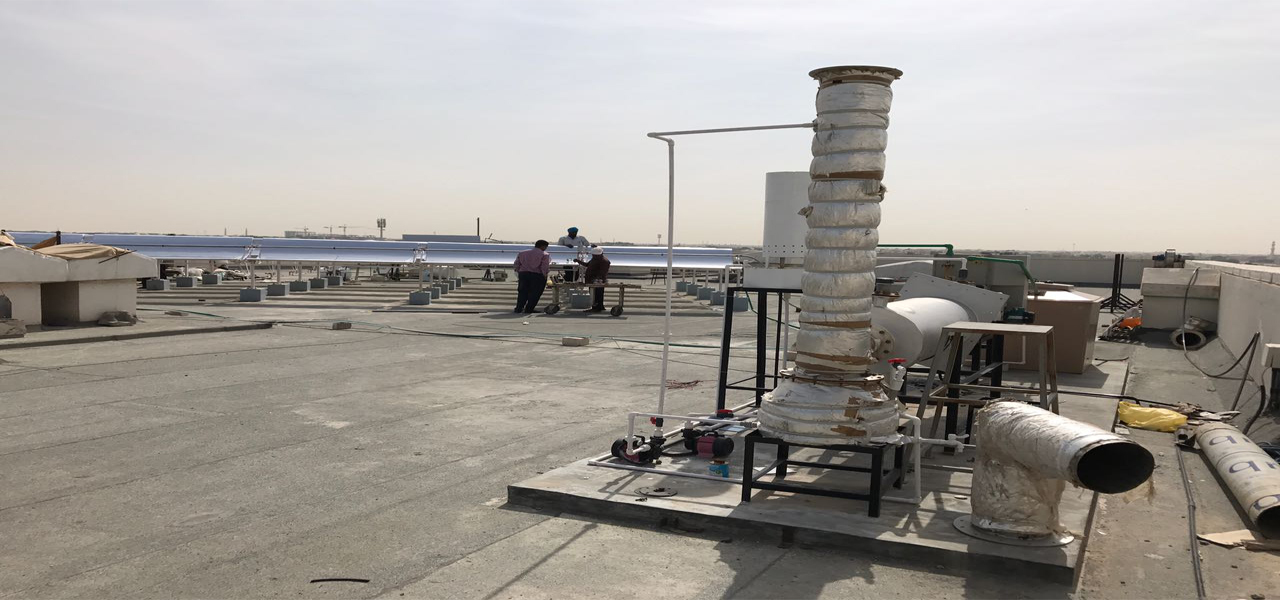Capturing and using waste heat could be one of the largest conservation and greenhouse gas reduction opportunities. It cuts carbon and helps to protect the environment. ADsorption technology is the way forward in waste heat utilization. It offers a highly reliable, efficient solution that takes waste heat from the cogeneration process to operate the chiller. The ADsorption chiller provides continuous operation with remarkable efficiency, it is also safer for the environment and offers much lower life-cycle costs.
Technical Specifications
Waste Heat Utilization
Waste Heat recovery
The highly efficient chiller offers exceptional cooling capabilities and uses water as its cooling agent, so it’s highly environment friendly. The water evaporates in a vacuum and thereby extracts heat from its surroundings (evaporating-energy). Through this process, cooling takes place. There are no high voltage motors or large compressors and no external temperature controls are required for capacity control or to protect the chiller.
Non-hazardous
With water as refrigerant, any pipework or valve work can be undertaken easily as there are no hazardous substances such as lithium bromide or ammonia within the chiller. Instead, it uses a natural substance, silica gel plus water as a refrigerant. The chiller is almost fully recyclable and has no hazardous refrigerants to dispose of.
Minimal Maintenance
Because the ADsorption chiller operates on such a simple process, the downtime is minimal and maintenance is kept to an absolute minimum too. Simplicity of operation makes the chiller extremely reliable and safe, with low operating costs. There are no hazardous substances making the whole process highly environmentally friendly.
In comparison to conventional air conditioning and refrigeration, EnerTek ADsorption chiller technology can deliver a substantial reduction in both primary energy consumption and carbon emissions.
Efficiency
EnerTek Adsorption chillers are ideal for solar thermal applications and can also be used alongside district heating systems. It offers huge energy and carbon saving potential, not only within a tri-generation application (i.e. combined cooling, heating and power) but also in any application where an abundance of waste heat is produced and a requirement for cooling or refrigeration exists.
EnerTek Adsorption Chiller produce maximized output with minimized impact and lower costs. It is a highly reliable, efficient solution that takes waste heat to produce chilled water, which in turn can be used for cooling and linked into refrigeration applications. ADsorption technology produces chilled water down to as low as 10°C as required, making it ideal for any application with a high cooling demand such as process cooling, supermarkets and data centres.
Within a wide range of temperatures from 80°C to 120°C of pressurized hot water, the chilled water down to 10°C. The conditioned cool air will be produced around 20°C.
Operating Principle
The ADsorption chiller can operate efficiently with a lower heat source, thereby delivering cooling solutions to a wider range of applications. It consists of 4 chambers, they are:
Evaporator,
Condenser,
2- ADsorption chambers
Chambers:
The 2-central ADsorption chambers contain heat exchangers packed with silica, with a valve between them to allow vapour pressure equalization. Between each central ADsorption chamber, “evaporator” and “condenser” chambers, valves allow the transfer of vapour when there is sufficient pressure differential.
Water sources:
There are 3 types of water sources are available
1) Waste hot water from the cogeneration process alternates between the two central ADsorption heat exchangers and drives out the moisture previously adsorbed by the silica.
2) The evaporator is fed by a constant flow of chilled water return and supply.
3) The cooling water supplies the condenser section and alternates between the two ADsorption heat exchangers. The cooling water is pumped to a remote heat rejection system.
The water flow is directed to the specific areas of the chiller by control valves which are automatically sequenced by the chillers on board controller.
The charge of refrigerant (water) within the chiller is circulated around the chambers by means of vapour pressure differential and a gravity drain from the condenser section where it has been condensed from a vapour to a liquid.
The drained water is collected at the bottom of the machine and pumped into a distribution header which sprays the fluid over the vaporator heat exchanger. This section is at lower pressure and the water fluid evaporates when in contact with the heat exchanger and in doing so absorbs heat from the evaporator tube bundle, providing a chilling effect to the water within. One complete cycle takes around seven minutes and capacity control is achieved by shortening the cycle time.
Models
Vaigunth EnerTek P. Ltd. has proven technical expertise and they are designing the system based on the client’s requirements.
- 10 Ton
- 20 Ton
- 50 Ton
- 100 Ton
Advantages
- Long life (more than 20 years)
- Less maintenance
- Low operating cost
- Use Solar thermal
- Uses a natural substances
- ‘Green’ refrigerant and desiccant
- Low electricity consumption
- No carbon emission
- Sound free system
- Wide hot water temperature range (80oC to 120oC)
- No hazardous substances
- Downtime is minimal

